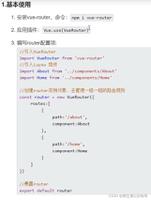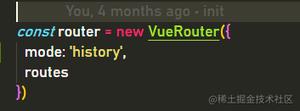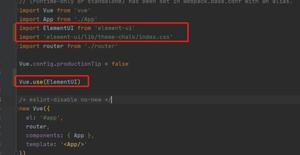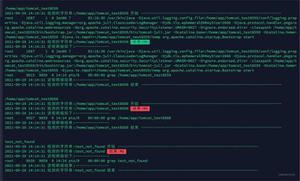使用Vue-Router 2实现路由功能实例详解
router" title="vue-router">vue-router是Vue.js官方的路由插件,它和vue.js是深度集成的,适合用于构建单页面应用。vue的单页面应用是基于路由和组件的,路由用于设定访问路径,并将路径和组件映射起来。传统的页面应用,是用一些超链接来实现页面切换和跳转的。在vue-router单页面应用中,则是路径之间的切换,也就是组件的切换。
注意:vue-router 2只适用于Vue2.x版本,下面我们是基于vue2.0讲的如何使用vue-router 2实现路由功能。
推荐使用npm安装。
npm install vue-router
一、使用路由
在main.js中,需要明确安装路由功能:
import Vue from 'vue'
import VueRouter from 'vue-router'
import App from './App.vue'
Vue.use(VueRouter)
1.定义组件,这里使用从其他文件import进来
import index from './components/index.vue'
import hello from './components/hello.vue'
2.定义路由
const routes = [
{ path: '/index', component: index },
{ path: '/hello', component: hello },
]
3.创建 router 实例,然后传 routes 配置
const router = new VueRouter({
routes
})
4.创建和挂载根实例。通过 router 配置参数注入路由,从而让整个应用都有路由功能
const app = new Vue({
router,
render: h => h(App)
}).$mount('#app')
经过上面的配置之后呢,路由匹配到的组件将会渲染到App.vue里的<router-view></router-view>
那么这个App.vue里应该这样写:
<template>
<div id="app">
<router-view></router-view>
</div>
</template>
index.html里呢要这样写:
<body>
<div id="app"></div>
</body>
这样就会把渲染出来的页面挂载到这个id为app的div里了。
二、重定向 redirect
const routes = [
{ path: '/', redirect: '/index'}, // 这样进/ 就会跳转到/index
{ path: '/index', component: index }
]
三、嵌套路由
const routes = [
{ path: '/index', component: index,
children: [
{ path: 'info', component: info}
]
}
]
通过/index/info就可以访问到info组件了
四、懒加载
const routes = [
{ path: '/index', component: resolve => require(['./index.vue'], resolve) },
{ path: '/hello', component: resolve => require(['./hello.vue'], resolve) },
]
通过懒加载就不会一次性把所有组件都加载进来,而是当你访问到那个组件的时候才会加载那一个。对于组件比较多的应用会提高首次加载速度。
五、<router-link>
在vue-router 1中,使用的是
在vue-router 2中,使用了<router-link></router-link>替换1版本中的a标签
<!-- 字符串 -->
<router-link to="home">Home</router-link>
<!-- 渲染结果 -->
<a href="home" rel="external nofollow" >Home</a>
<!-- 使用 v-bind 的 JS 表达式 -->
<router-link v-bind:to="'home'">Home</router-link>
<!-- 不写 v-bind 也可以,就像绑定别的属性一样 -->
<router-link :to="'home'">Home</router-link>
<!-- 同上 -->
<router-link :to="{ path: 'home' }">Home</router-link>
<!-- 命名的路由 -->
<router-link :to="{ name: 'user', params: { userId: 123 }}">User</router-link>
<!-- 带查询参数,下面的结果为 /register?plan=private -->
<router-link :to="{ path: 'register', query: { plan: 'private' }}">Register</router-link>
六、路由信息对象
1.$route.path
字符串,对应当前路由的路径,总是解析为绝对路径,如 "/foo/bar"。
2.$route.params
一个 key/value 对象,包含了 动态片段 和 全匹配片段,如果没有路由参数,就是一个空对象。
3.$route.query
一个 key/value 对象,表示 URL 查询参数。例如,对于路径 /foo?user=1,则有 $route.query.user == 1,如果没有查询参数,则是个空对象。
4.$route.hash
当前路由的 hash 值 (不带 #) ,如果没有 hash 值,则为空字符串。
5.$route.fullPath
完成解析后的 URL,包含查询参数和 hash 的完整路径。
6.$route.matched
一个数组,包含当前路由的所有嵌套路径片段的 路由记录 。路由记录就是 routes 配置数组中的对象副本(还有在 children 数组)。
综合上述,一个包含重定向、嵌套路由、懒加载的main.js如下:
import Vue from 'vue'
import VueRouter from 'vue-router'
import App from './App'
Vue.use(VueRouter)
const router = new VueRouter({
routes:[
{ path: '/', redirect: '/index' },
{ path: '/index', component: resolve => require(['./components/index.vue'], resolve),
children:[
{ path: 'info', component: resolve => require(['./components/info.vue'], resolve) }
]
},
{ path: '/hello', component: resolve => require(['./components/hello.vue'], resolve) },
]
})
const app = new Vue({
router,
render: h => h(App)
}).$mount('#app')
更详细的vue-router功能请参考文档:https://router.vuejs.org/zh-cn/
总结
以上所述是小编给大家介绍的使用Vue-Router 2实现路由功能实例详解,希望对大家有所帮助,如果大家有任何疑问请给我留言,小编会及时回复大家的。在此也非常感谢大家对网站的支持!
以上是 使用Vue-Router 2实现路由功能实例详解 的全部内容, 来源链接: utcz.com/z/311538.html









